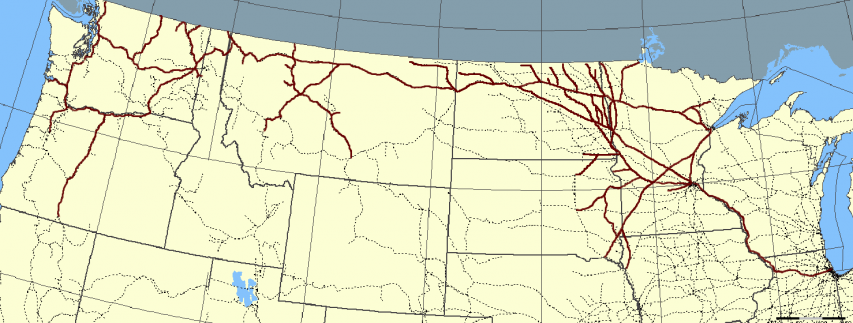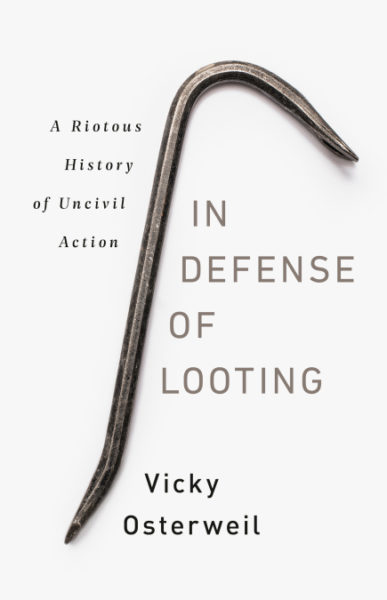Rex Krueger
Publisheed 2 Sep 2020Take five tools and some construction furniture and make a REAL piece of furniture.
More video and exclusive content: http://www.patreon.com/rexkrueger
Tools/materials in this video (affiliate): Scroll down!
Japanese Ryoba Saw: https://amzn.to/2Qq3lZN
F Clamp: https://amzn.to/2Qtbddb
Screw Clamp: https://amzn.to/3gCa5i8
(This is not the cheapest screw-clamp, but it’s a good brand.)
Carving Knife: https://amzn.to/2DkbsnMNeed a workbench? Build my Joiner’s Bench for about $250 including hardware and vise!
Video: https://www.youtube.com/watch?v=zcq1L…
Plans: https://www.rexkrueger.com/store/join…Make the Low Japanese Sawhorses: https://www.youtube.com/watch?v=j7O7E…
Get the plans: https://www.rexkrueger.com/store/2d7p…Make the Chopping Block:
https://www.youtube.com/watch?v=jzzXT…Sign up for Fabrication First, my FREE newsletter: http://eepurl.com/gRhEVT
Wood Work for Humans Tool List (affiliate):
Stanley 12-404 Handplane: https://amzn.to/2TjW5mo
Honing Guide: https://amzn.to/2TaJEZM
Green buffing compound: https://amzn.to/2XuUBE2
Cheap metal/plastic hammer for plane adjusting: https://amzn.to/2XyE7Ln
Spade Bits: https://amzn.to/2U5kvML
Metal File: https://amzn.to/2CM985y (I don’t own this one, but it looks good and gets good reviews. DOESN’T NEED A HANDLE)
My favorite file handles: https://amzn.to/2TPNPpr
Block Plane Iron (if you can’t find a used one): https://amzn.to/2I6V1vh
Stanley Marking Knife: https://amzn.to/2Ewrxo3
Mini-Hacksaw: https://amzn.to/2QlJR85
Blue Kreg measuring jig: https://amzn.to/2QTnKYd
Blue Handled Marples Chisels: https://amzn.to/2tVJARY
Suizan Dozuki Handsaw: https://amzn.to/3abRyXB
Vaughan Ryoba Handsaw: https://amzn.to/2GS96M0
Glue Dispenser Bottle: https://amzn.to/30ltwoB
Orange F Clamps: https://amzn.to/2u3tp4X
Blue Painters Tape: https://amzn.to/35V1Bgo
Round-head Protractor: https://amzn.to/37fJ6oz
5 Minute Epoxy: https://amzn.to/37lTfjK
Dewalt Panel Saw: https://amzn.to/2HJqGmOPlans, t-shirts, and hoodies: http://www.rexkrueger.com/store
Get my woodturning book: http://www.rexkrueger.com/book
Follow me on Instagram: @rexkrueger
September 3, 2020
Make a traditional milking stool. Limited tools. No Bench.
Fallen Flag — The Great Northern Railway
 This month’s Classic Trains featured fallen flag is an American railway that definitely deserved to call itself “great”, James J. Hill’s Great Northern Railway. Hill was noteworthy as the only “Robber Baron” of that era who was scrupulous in avoiding government entanglements (including grants, loans, subsidies, and other forms of money-with-political-strings-attached), building his entire railway system using private funds and rational profit-oriented economic decision-making (the other transcontinental lines often over-built to claim higher subsidies or added money-losing branch lines to please powerful politicians). The result was that when economic hard times hit the railway business, his was the only transcontinental that never needed to declare bankruptcy.
This month’s Classic Trains featured fallen flag is an American railway that definitely deserved to call itself “great”, James J. Hill’s Great Northern Railway. Hill was noteworthy as the only “Robber Baron” of that era who was scrupulous in avoiding government entanglements (including grants, loans, subsidies, and other forms of money-with-political-strings-attached), building his entire railway system using private funds and rational profit-oriented economic decision-making (the other transcontinental lines often over-built to claim higher subsidies or added money-losing branch lines to please powerful politicians). The result was that when economic hard times hit the railway business, his was the only transcontinental that never needed to declare bankruptcy.
In an earlier post, Dane Stuhlsatz summarized the GN’s engineering:
Hill’s line […] was methodically surveyed and built, on the shortest routes possible, with the least gradient possible, and using the best steel and other materials on the market at the time. Rather than political largess, Hill made his decisions based on profit and loss. But, for all the efficiency that Hill built into his line — he was able to transport across the country faster, cheaper, and with less maintenance costs than could the UP and CP — arguably the most important aspect for the viability of his business was the freedom to conduct business untethered by the strings that accompanied government subsidies.

Route map of the Great Northern Railway, circa 1920. Red lines are Great Northern trackage; dotted lines are other railroads.
Map by Elkman via Wikimedia Commons.
George Drury outlines the origins of the railway:
In 1857, the Minnesota & Pacific Railroad was chartered to build a line from Stillwater, Minnesota, on the St. Croix River, through St. Paul and St. Cloud to St. Vincent, in the northwest corner of the state. The company defaulted after completing a roadbed between St. Paul and St. Cloud, Minnesota, and its charter was taken over by the St. Paul & Pacific Railroad, which ran its first train between St. Paul and St. Anthony (now Minneapolis) in 1862.
For financial reasons the railroads were reorganized as the First Division of the St. Paul & Pacific. Both StP&P companies were soon in receivership, and Northern Pacific, with which the StP&P was allied, went bankrupt in the Panic of 1873.
In 1878 James J. Hill and an associate, George Stephen, acquired the two St. Paul & Pacific companies and reorganized them as the St. Paul, Minneapolis & Manitoba Railway (“the Manitoba”). By 1885 the company had 1,470 miles of railroad and extended west to Devils Lake, North Dakota. In 1886 Hill organized the Montana Central Railway to build from Great Falls, Montana, through Helena to Butte, and in 1888 the line was opened, creating in conjunction with the StPM&M a railroad from St. Paul to Butte.
In 1881 Hill took over the 1856 charter of the Minneapolis & St. Cloud Railroad. He first used its franchises to build the Eastern Railway of Minnesota from Hinckley, Minnesota, to Superior, Wisconsin, and Duluth. Its charter was liberal enough that he chose it as the vehicle for his line to the Pacific. He renamed the road the Great Northern Railway; it then leased the Manitoba and assumed its operation.
[…]
Even before completion of the route from St. Paul, the Great Northern opened a line along the shore of Puget Sound between Seattle and Vancouver, British Columbia, in 1891. In the years that followed, Hill pushed a number of lines north across the international boundary into the mining area of southern British Columbia in a running battle with Canadian Pacific. In 1912 GN traded its line along the Fraser River east of Vancouver to Canadian Northern for trackage rights into Winnipeg.
Great Northern gradually withdrew from British Columbia after Hill’s death. In 1909 the Manitoba Great Northern Railway purchased most of the property of the Midland Railway of Manitoba (lines from the U.S. border to Portage la Prairie and to Morden), leaving the Midland, which was jointly controlled by GN and NP, with terminal properties in Winnipeg. The Manitoba Great Northern disposed of its rail lines in 1927. They were later abandoned.

Postcard photo of the Great Northern Railway’s “Empire Builder” streamliner between Everett and Seattle, Washington, circa 1963.
Great Northern Railway postcard via Wikimedia Commons.
The Great Northern and Northern Pacific lines agreed to a merger in 1901 (both lines were controlled by Hill) but the plan was vetoed by the Interstate Commerce Commission. A second attempt in the 1920s after Hill’s death was again turned down by the regulator unless the combined company divested ownership of the Chicago, Burlington & Quincy which was both railways’ connection from Minneapolis to Chicago. It was only on the final attempt in 1970 that the deal gained the government’s grudging approval and the Great Northern, Northern Pacific, and CB&Q merged to form the Burlington Northern.
Britain and France vs. The World | The Suez Crisis | Part 2
TimeGhost History
Published 2 Sep 2020After much delay, Britain and France finally keep to their side of the bargain with Israel and begin their bombing campaign of Egypt. But the condemnation from America and the UN calls into question how long the invaders can keep this up.
Join us on Patreon: https://www.patreon.com/TimeGhostHistory
Hosted by: Indy Neidell
Written by: Francis van Berkel and Joram Appel
Director: Astrid Deinhard
Producers: Astrid Deinhard and Spartacus Olsson
Executive Producers: Astrid Deinhard, Indy Neidell, Spartacus Olsson, Bodo Rittenauer
Creative Producer: Joram Appel
Post-Production Director: Wieke Kapteijns
Research by: Francis van Berkel and Joram Appel
Image research by: Shaun Harrison & Karolina Dołęga
Edited by: Karolina Dołęga
Sound design by: Marek KamińskiColorizations by:
Mikołaj Uchman
Daniel Weiss
Norman Stewart – https://oldtimesincolor.blogspot.com/Visual Sources:
Israeli Defense Forces
National Photo Collection of Israel
Universal Studios
Tony Clarke Collection – David Whitworth from Wikimedia Commons
Abubiju from Wikimedia Commons
Fortepan Donor
Government Press Office (Israel)
National Archives NARA
Icons from The Noun Project by: Gilberto, Komkrit Noenpoempisut, Alice Design, SmalllikeMusic:
“As the Rivers Collapse” – Deskant
“Moving to Disturbia” – Experia
“March Of The Brave 10” – Rannar Sillard – Test
“Weapon of Choice” – Fabien Tell
“Disciples of Sun Tzu” – Christian Andersen
“London” – Howard Harper-Barnes
“Maze Heist” – Max Anson
“Descending Mount Everest” – Trailer WorxArchive by Screenocean/Reuters https://www.screenocean.com.
A TimeGhost chronological documentary produced by OnLion Entertainment GmbH.
From the comments:
TimeGhost History
2 days ago (edited)
This episode is pretty much the same as the last, only turned up to 11. Israel continues making gains in Sinai, but they are now aided by British and French air forces that have finally arrived.Meanwhile, Britain and France continue lying through their teeth about any collusion with Israel. The British Foreign Minister will lie to his own Parliament about military collaboration while French ships are supporting an Israeli offensive against the settlement of Rafah.
The economic costs of this also become very apparent in this episode. Nasser successfully closes the Canal, and with America in no mood to help, the whole of Europe faces oil shortages.
In short, the whole thing is a mess. Don’t worry though, Indy will guide you through it.
“[L]ooting is a powerful tool to bring about real, lasting change in society.”
Not everyone on the progressive team is all-in on the “Loot your way to utopia”, as Graeme Wood (risking cancellation by his co-religionists) criticizes Vicky Osterweil’s paean to looters and looting:
Last week, NPR’s Code Switch published an interview with Vicky Osterweil, the author of In Defense of Looting: A Riotous History of Uncivil Action. NPR summarizes the book as an argument that “looting is a powerful tool to bring about real, lasting change in society.” If the real, lasting change you wish to effect is burning society to cinders and crippling for a generation its ability to serve its poorest citizens, then I suppose I am forced to agree. Osterweil sees an upside. Looting is good, she says, because it exposes a deep truth about the great American confidence game, which is that “without police and without state oppression, we can have things for free.” She came to this conclusion six years ago, and in her book, which is written “in love and solidarity with looters the world over,” she defends this view as ably as anyone could.
Osterweil’s argument is simple. The “so-called” United States was founded in “cisheteropatriarchal racial capitalist” violence. That violence produced our current system, particularly its property relations, and looting is a remedy for that sickness. “Looting rejects the legitimacy of ownership rights and property, the moral injunction to work for a living, and the ‘justice’ of law and order,” she writes. Ownership of things — not just people — is “innately, structurally white supremacist.”
The rest of the remedy is more violence, which she celebrates as an underrated engine for social justice. The destruction of businesses is an “experience of pleasure, joy, and freedom,” Osterweil writes. It is also a form of “queer birth.” “Riots are violent, extreme, and femme as fuck,” according to Osterweil. “They rip, tear, burn, and destroy to give birth to a new world.” She reserves her most pungent criticism for advocates of nonviolence, a “bankrupt concept” primarily valuable for enlisting “northern liberals.” Liberal is pejorative in this book. Martin Luther King Jr. is grudgingly acknowledged as a positive figure, but not as positive a figure as he would have been if he had kicked some white-capitalist ass and put a few pigs in the ICU. The “I Have a Dream” speech was, Osterweil writes, “the product of a series of sellouts and silencings, of nonviolent leaders dampening the militancy of the grass roots” and “sapping the movement’s energy.” More to her taste is Robert F. Williams, who practiced armed resistance, and Assata Shakur, who murdered a New Jersey police officer and remains a fugitive in Cuba. The violence needn’t be in self-defense — Shakur’s certainly was not. Osterweil quotes the “wisdom” of Stokely Carmichael: “Responsibility for the use of violence by black men, whether in self-defense or initiated by them [emphasis mine], lies with the white community.”
By now you have guessed that I am not the audience for this book. I have a job, and am therefore invested in building a system where you get paid for your work and pay others for theirs, and then everyone pays taxes to make sure that if these arrangements don’t work out, you can still have a dignified life. (Easily my favorite line in the book was written not by the author but by her publisher, right under the copyright notice: “The scanning, uploading, and distribution of this book without permission is a theft of the author’s intellectual property,” it says. “Thank you for your support of the author’s rights.”) My job sometimes entails traveling to countries recently or currently destroyed by civil unrest, and that experience has made me appreciate the fragility of peace, and has not made me eager to conduct a similar experiment in my own city.
QotD: Racism
Racism is stupid. Humans come in different shades for obvious biological reasons to do with the intensity of sunlight where their ancestors grew up. Apart from calculating intake of Vitamin D when living in cold climates, it shouldn’t matter. Yet people keep on making it matter — for all kinds of reasons; few if any of them good.
America’s race relations problems arise from its shameful history with slavery. Black Americans clearly feel a sense of solidarity based on that history. I can understand the magnificent language of the Declaration of Independence or the majestic ideas behind the US Constitution are tainted for black American students knowing, as they learn about them, that they didn’t apply to their ancestors. It must be hard for them to take the same pride in the foundation of their great nation as white classmates. I get that “Plymouth Rock landed on us” idea.
Many White Americans do feel a corresponding sense of shame but it’s daft to feel guilty for stuff people who share some random attribute with you did. Short people are not to blame for Napoleon and nor (fun though it is to tease them about him) are French people. No doubt we all do feel pride and shame about our ancestors’ achievements and sins, but it’s nuts to base law or policy on those irrational feelings or to allow them to taint relationships today.
Even if we were to go down the mad road of punishing people for the sins of the fathers, we’d have to find out what those “fathers” actually did, person by person. To do it skin tone by skin tone would itself be racist. It would involve, for example, some British people being heroes because their ancestors sailed with the Royal Navy squadron detailed to suppress the Slave Trade while others are villains because theirs crewed slave ships. There would be no way of knowing if you were hero or villain until you played that historical lottery.
As I told a Jewish American friend who teased me one Fourth of July about losing the American Revolutionary War, “That was a dispute between two sets of my ancestors — yours were in Germany at the time. Stay out of our family quarrels.” That’s a good joke but it would be dumb to base a social science on it. Yet America’s “grievance studies” types have done something remarkably similar in creating the wicked notion of “white privilege”.
Tom Paine, “Checking my privilege”, The Last Ditch, 2020-06-02.








